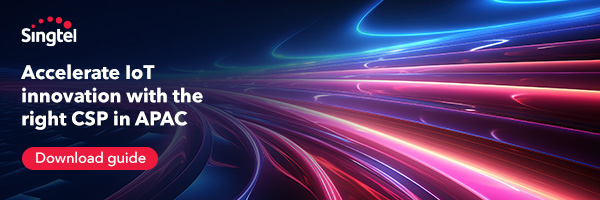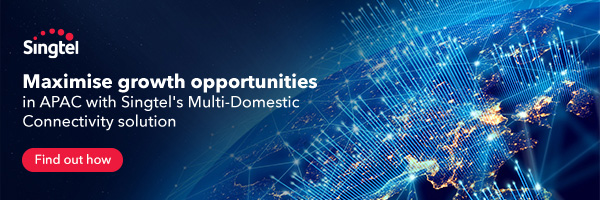
In the labyrinth of technological innovation, the Internet of Things (IoT) stands out as a beacon of connectivity, weaving an intricate tapestry that spans industries and revolutionizes daily life. As a seasoned journalist entrenched in the IT sector, my objective is to unravel the dynamic landscape of IoT trends, all while maintaining the subtlety of my professional background.
Decoding the Dynamics: Evolutionary Trends Shaping the IoT Realm
1. Edge Computing’s Ascension to Prominence
The What: Traditionally, IoT devices relied on centralized cloud computing for data processing. However, the evolving landscape demands a paradigm shift, giving rise to the prominence of edge computing in Internet of Things app development. This decentralized approach involves processing data closer to the source, minimizing latency, and enhancing efficiency. The integration of edge computing is particularly beneficial for Internet of Things app development, as it ensures that data processing occurs in real-time, providing a seamless and responsive experience for users interacting with IoT applications.
The Why: In the realm of autonomous vehicles and smart manufacturing, where real-time data processing is paramount, edge computing emerges as a game-changer. The reduced lag in data transfer ensures quicker response times, a crucial factor for applications requiring split-second decision-making.
2. 5G Unleashing the Full Potential of IoT
The What: The deployment of 5G networks has emerged as a catalyst, propelling Internet of Things into a new era of possibilities. With increased bandwidth and lower latency, 5G facilitates high-speed data transfer, unlocking the potential for previously unthinkable IoT applications.
The Why: Industries ranging from healthcare to smart cities benefit from the capabilities of 5G. Whether it’s powering augmented reality applications in healthcare or optimizing urban infrastructure, the seamless connectivity provided by 5G is reshaping the IoT landscape.
3. Fortifying the IoT Fortress: Enhanced Security Measures
The What: As the number of connected devices proliferates, security concerns become more pronounced, especially in the realm of security testing services. The IoT industry is responding by fortifying its defenses, implementing robust security measures such as end-to-end encryption, secure boot processes, and frequent security updates. The incorporation of security testing services is pivotal in ensuring the resilience of IoT systems against potential vulnerabilities and cyber threats, providing comprehensive assessments to identify and address security gaps in the interconnected network of devices. This proactive approach underscores the industry’s commitment to delivering secure and reliable IoT solutions.
The Why: The rising threat of cyber attacks demands proactive measures. Strengthening security protocols is not only essential to safeguard against potential breaches but also to protect sensitive data traversing the vast network of interconnected devices.
4. AI and ML: The Brainpower Behind Smarter IoT Devices
The What: The infusion of artificial intelligence (AI) and machine learning (ML) into the IoT ecosystem marks a significant evolutionary leap. These technologies empower IoT devices to analyze data, make predictions, and adapt their behavior over time, leading to a new era of intelligent connected devices.
The Why: From smart homes learning occupants’ preferences to industrial machines predicting maintenance needs, the integration of AI and ML amplifies the capabilities of IoT devices. This not only enhances efficiency but also opens doors to personalized user experiences across various applications.
5. Greening the IoT: Sustainability in Development
The What: As the world collectively embraces sustainability, the IoT industry is following suit. A growing focus on eco-friendly practices includes the use of energy-efficient devices, recyclable materials, and leveraging IoT for environmental monitoring and conservation efforts.
The Why: Reducing the carbon footprint of IoT devices aligns with broader environmental goals. Manufacturers embracing green practices not only contribute to a healthier planet but also position themselves as socially responsible entities in the eyes of consumers.
The Path Forward: Charting the Trajectory of IoT
As we peer into the future, the trajectory of Internet of Things continues to unfold with unprecedented potential. The amalgamation of edge computing, 5G connectivity, fortified security, AI-driven intelligence, and sustainability practices positions Internet of Things as a transformative force reshaping our digital landscape.
Conclusion: a Connected Tomorrow
In conclusion, the Internet of Things is not merely a technological phenomenon but a societal shift that transcends boundaries. The trends discussed here are not isolated developments; they converge to shape a connected, efficient, and sustainable future. As Internet of Things matures, the synergy between devices, networks, and data will redefine the very fabric of our existence.
FAQ
1. How does edge computing benefit IoT devices, and in what scenarios is it particularly crucial?
Edge computing minimizes latency by processing data closer to the source, making it crucial for applications demanding real-time data processing. Industries like autonomous vehicles and smart manufacturing benefit significantly from the reduced lag in data transfer, ensuring faster response times.
2. Why is 5G considered essential for the advancement of Internet of Things, and how does it impact specific industries?
The rollout of 5G networks provides increased bandwidth and lower latency, enabling devices to handle more data and perform complex tasks seamlessly. This is particularly impactful for industries such as healthcare, where 5G powers applications like augmented reality, optimizing patient care and diagnostics.
3. How is the Internet of Things industry addressing security concerns, and what measures are being implemented?
It is implementing robust security measures, including end-to-end encryption, secure boot processes, and frequent security updates. These measures are essential to safeguard against cyber threats and protect sensitive data as the number of connected devices continues to grow.
4. In what ways does the integration of AI and machine learning enhance the capabilities of IoT devices?
AI and machine learning empower smart devices to analyze data, make predictions, and adapt their behavior over time. This enhances the intelligence of devices, allowing for applications like personalized insights in healthcare and predictive maintenance in industrial settings.
5. Why is sustainability important in IoT development, and how do manufacturers embrace eco-friendly practices?
The shift towards sustainability in development involves adopting eco-friendly practices, such as energy-efficient devices, recyclable materials, and the use of IoT for environmental monitoring. This aligns with global sustainability goals and enhances the reputation of manufacturers as socially responsible entities.







